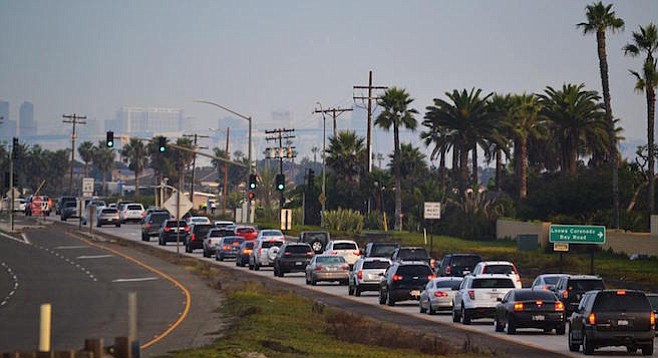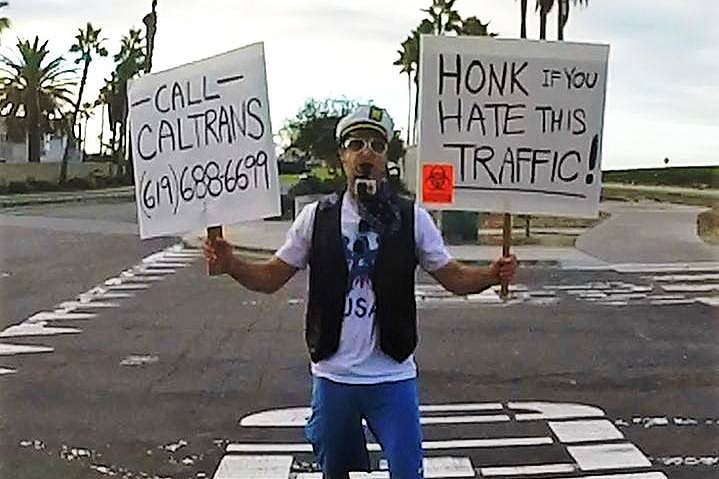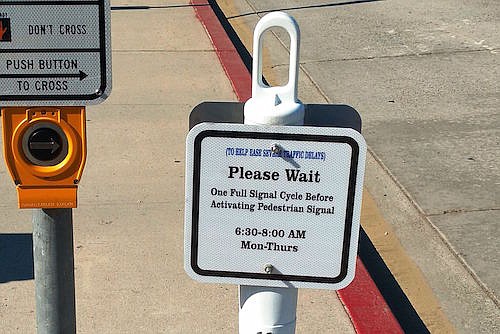 Facebook
Facebook
 X
X
 Instagram
Instagram
 TikTok
TikTok
 Youtube
Youtube

Commuters are fed up with the backed-up traffic on the Silver Strand in Coronado.
"5 mph for 45+ minutes is pretty damn bad and inefficient for such a sparsely-populated area," Jessie Lee of Imperial Beach wrote in a recent Facebook post in support of a petition to address the traffic problem. "There are simple traffic engineering solutions offered in the petition to ease this. I happen to also work in LA on a regular basis, so I do have that gauge to compare."
Lee said she leaves for work at 8 a.m. and, "Door to door, despite living only 14 miles away from my workplace, I still don't get to my workplace until at least 9 everyday, no matter which way I choose to commute (by trolley, by Uber, bike, by ferry, a combo, or entirely by my own car)."
The situation is getting bad enough that the Coronado Police Department has recently issued advisories over the jam-packed workday drive.
The highway gets congested because it connects to the military bases, Coronado middle school and high school, and also because it is an alternative route when Interstate 5 is gridlocked and commuters use the highway to get to and from the Coronado bridge. When additional aircraft carriers are docked at North Island, the situation gets even worse.

The Coronado city government resisted a regional plan to turn over Caltrans control of the corridor to the city last March, which did not help the situation, said Daron Case, another fed-up resident who started the Change.org petition.
"My wife has to commute the Strand each morning to take the kids to school in town. Having 3 kids in a car for 45+ minutes is stressful for the parents and children," said Case via email. "For residents of the Coronado Cays and Silver Strand Military Housing, the Silver Strand is the only way in and out, as geographically we live on an isthmus or tombolo (the Silver Strand)."
The Strand traffic is now "worse than the commute we left behind in Los Angeles." Case grew up in the Coronado Cays, where he lives now, but he lived in Los Angeles for 20 years.
"Back in the '80s, it would take 10–15 minutes to commute from the Coronado Cays to Coronado Middle School and Coronado High School," he said. "Unlike other freeways in major cities where if the traffic is backed up, you can get off the freeway on any exit and take surface streets, there is nowhere to get off the Silver Strand, as you are bounded by the San Diego Bay on one side and the Pacific Ocean on the other.... You're stuck. For this reason the traffic backups constitute a matter of public health & safety."
In an October 27th posting on the Facebook page he created, Case wrote, "Part of the problem here, my friends, is that there is NO SENSE OF URGENCY from the City Council."
Case’s activism seems to be working. The Coronado city government announced on October 28th that "the Police Department has accelerated soliciting quotes from security companies to manually control the traffic signals." The cost estimate didn't come in on time to consider at the November 1st city-council meeting.
Mayor Casey Tanaka said, "The City of Coronado will, on Monday, Nov. 7th, institute a new program of having the intersection in front of the Naval Amphibious Base manned with people to keep traffic moving efficiently. Just as Charger games, Padres games, and the Del Mar Racetrack require extraordinary efforts to manage large amounts of traffic, it seems that our city now must employ similar tactics to move people through town efficiently."

Other proposals to ease congestion have been adopted. The city has posted signs at crosswalks asking pedestrians "to wait one full signal cycle before activating the pedestrian signal," according to the October 28th announcement. The statement also said, "Caltrans made adjustments last week to one signal’s timing, giving northbound commuters 10 more seconds of green light by reducing the left turn onto the base. The City requested this week 10 more seconds of northbound cycle time."
The city also announced on October 28th that "adaptive signal technology," which "senses traffic volume and uses proprietary algorithms to vary signal durations to maximize vehicle flow," is "under consideration"; if approved, they would be installed by Labor Day of 2017.


Commuters are fed up with the backed-up traffic on the Silver Strand in Coronado.
"5 mph for 45+ minutes is pretty damn bad and inefficient for such a sparsely-populated area," Jessie Lee of Imperial Beach wrote in a recent Facebook post in support of a petition to address the traffic problem. "There are simple traffic engineering solutions offered in the petition to ease this. I happen to also work in LA on a regular basis, so I do have that gauge to compare."
Lee said she leaves for work at 8 a.m. and, "Door to door, despite living only 14 miles away from my workplace, I still don't get to my workplace until at least 9 everyday, no matter which way I choose to commute (by trolley, by Uber, bike, by ferry, a combo, or entirely by my own car)."
The situation is getting bad enough that the Coronado Police Department has recently issued advisories over the jam-packed workday drive.
The highway gets congested because it connects to the military bases, Coronado middle school and high school, and also because it is an alternative route when Interstate 5 is gridlocked and commuters use the highway to get to and from the Coronado bridge. When additional aircraft carriers are docked at North Island, the situation gets even worse.

The Coronado city government resisted a regional plan to turn over Caltrans control of the corridor to the city last March, which did not help the situation, said Daron Case, another fed-up resident who started the Change.org petition.
"My wife has to commute the Strand each morning to take the kids to school in town. Having 3 kids in a car for 45+ minutes is stressful for the parents and children," said Case via email. "For residents of the Coronado Cays and Silver Strand Military Housing, the Silver Strand is the only way in and out, as geographically we live on an isthmus or tombolo (the Silver Strand)."
The Strand traffic is now "worse than the commute we left behind in Los Angeles." Case grew up in the Coronado Cays, where he lives now, but he lived in Los Angeles for 20 years.
"Back in the '80s, it would take 10–15 minutes to commute from the Coronado Cays to Coronado Middle School and Coronado High School," he said. "Unlike other freeways in major cities where if the traffic is backed up, you can get off the freeway on any exit and take surface streets, there is nowhere to get off the Silver Strand, as you are bounded by the San Diego Bay on one side and the Pacific Ocean on the other.... You're stuck. For this reason the traffic backups constitute a matter of public health & safety."
In an October 27th posting on the Facebook page he created, Case wrote, "Part of the problem here, my friends, is that there is NO SENSE OF URGENCY from the City Council."
Case’s activism seems to be working. The Coronado city government announced on October 28th that "the Police Department has accelerated soliciting quotes from security companies to manually control the traffic signals." The cost estimate didn't come in on time to consider at the November 1st city-council meeting.
Mayor Casey Tanaka said, "The City of Coronado will, on Monday, Nov. 7th, institute a new program of having the intersection in front of the Naval Amphibious Base manned with people to keep traffic moving efficiently. Just as Charger games, Padres games, and the Del Mar Racetrack require extraordinary efforts to manage large amounts of traffic, it seems that our city now must employ similar tactics to move people through town efficiently."

Other proposals to ease congestion have been adopted. The city has posted signs at crosswalks asking pedestrians "to wait one full signal cycle before activating the pedestrian signal," according to the October 28th announcement. The statement also said, "Caltrans made adjustments last week to one signal’s timing, giving northbound commuters 10 more seconds of green light by reducing the left turn onto the base. The City requested this week 10 more seconds of northbound cycle time."
The city also announced on October 28th that "adaptive signal technology," which "senses traffic volume and uses proprietary algorithms to vary signal durations to maximize vehicle flow," is "under consideration"; if approved, they would be installed by Labor Day of 2017.
Comments